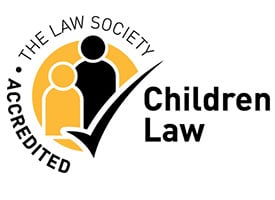Many parents facing court proceedings are worried that their children will feel ignored by the process. Will their opinions be considered? Will they be able to understand the decisions made about them and the reasons why?
Thankfully, the courts are becoming much better at helping children feel involved in the process. As part of these efforts, a high court judge recently gave his judgement in the form of a simple letter addressed to the child concerned, a teenage boy known as Sam who wanted to relocate to Scandinavia with his dad. Sam’s mum opposed the move and the judge agreed with her. A judge’s ‘judgement’ is the legal document explaining the reasons behind their decision, and is usually very long, formal and dry. By contrast, the letter in this case is a straightforward and very moving explanation of why the judge decided that it was best for Sam to stay where he is. You can read it here http://www.bailii.org/ew/cases/EWFC/HCJ/2017/48.html
The letter begins with a simple explanation of the law:
“When a case like this comes before the court, the judge has to apply the law as found in the Children Act 1989, and particularly in Section 1. You may have looked at this already, but if you Google it, you will see that when making my decision, your welfare is my paramount consideration –more important than anything else. If you look at s.1(3), there is also a list of factors I have to consider, to make sure that everything is taken into account.
One of the factors in the list the judge mentions is the child’s ‘ascertainable wishes and feelings’. This obviously depends on the child’s age and maturity. As a child grows older, their views should become more important, but they should always be just one factor in the court’s broader assessment of what is best for the child. A judge has a very difficult balance between respecting a child’s views but also properly considering the reasons why a child might be biased in a particular way.
Mr Justice Peter Jackson summarised how he saw this problem in Sam’s case:
“All fathers influence their sons, but your father goes a lot further than that. I’m quite clear that if he was happy with the present arrangements, you probably would be too. Because he isn’t, you aren’t… So I respect your views, but I don’t take them at face value because I think they are significantly formed by your loyalty to your father”.
It is clear that a child’s views should be considered as part a broad range of other factors. But how does the judge listen to these views?
- The child giving evidence in court: This happens rarely and there is no automatic right for a child to speak at court. Usually, there are other much better ways to assess their views, particularly given the inevitable pressure of speaking in court in front of parents. In the above case, Sam briefly gave evidence at the start of the hearing. His parents did not question him directly, instead they each put forward five questions for the judge to ask.
- A report to the court by CAFCASS: This is the most common way that a child is heard. A social worker will talk to both parents and the child if they are old enough, and will write a report for the court on the child’s wishes and feelings. They will usually make recommendations about the children’s future arrangements based on what they have seen or heard. The report may sometimes include a letter from the child to the judge explaining how they feel in their own words.
- Separate representation for the child: In some cases, a child will be made a separate party to the proceedings in their own right, and a ‘Guardian’ (a CAFCASS officer) will be appointed to act for them. This is standard in care proceedings. In private proceedings it is much less common, but a Guardian may still be appointed if there are allegations of abuse or other complex issues to consider. The Guardian is appointed to represent the best interests of the child and they will in turn instruct a solicitor for the child to convey the child’s wishes to the judge.
- The child talking to the judge: Recently, there has been an increase in the practice of judges seeing children, and indeed this is now encouraged within strict boundaries. The judge will typically see the child with the CAFCASS officer present. The judge is not permitted to take any evidence from the child, and the purpose is not so that the judge can independently ascertain their wishes and feelings. Instead, the aim is to ensure that the child fully understands the process and feels they are participating in it.
If you would like any advice on children matters please do not hesitate to contact us on 01392 421777.
Need some advice? Get in touch today
"*" indicates required fields
The information submitted here is used and stored for the purpose of replying to the enquiry. For more information on how we process data please visit our Privacy Policy.









